Ruoqi Deng
Multi-target Detection for Reconfigurable Holographic Surfaces Enabled Radar
Jan 17, 2024Abstract:Multi-target detection is one of the primary tasks in radar-based localization and sensing, typically built on phased array antennas. However, the bulky hardware in the phased array restricts its potential for enhancing detection accuracy, since the cost and power of the phased array can become unaffordable as its physical aperture scales up to pursue higher beam shaping capabilities. To resolve this issue, we propose a radar system enabled by reconfigurable holographic surfaces (RHSs), a novel meta-surface antenna composed of meta-material elements with cost-effective and power-efficient hardware, which performs multi-target detection in an adaptive manner. Different from the phase-control structure in the phased array, the RHS is able to apply beamforming by controlling the radiation amplitudes of its elements. Consequently, traditional beamforming schemes designed for phased arrays cannot be directly applied to RHSs due to this structural difference. To tackle this challenge, a waveform and amplitude optimization algorithm (WAOA) is designed to jointly optimize the radar waveform and RHS amplitudes in order to improve the detection accuracy. Simulation results reveal that the proposed RHS-enabled radar increases the probability of detection by 0.13 compared to phased array radars when six iterations of adaptive detection are performed given the same hardware cost.
Reconfigurable Holographic Surface: A New Paradigm to Implement Holographic Radio
Dec 28, 2022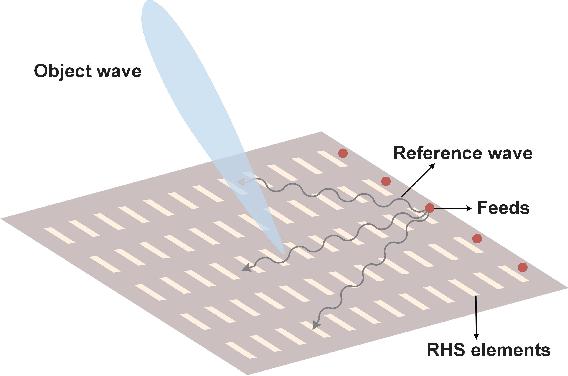

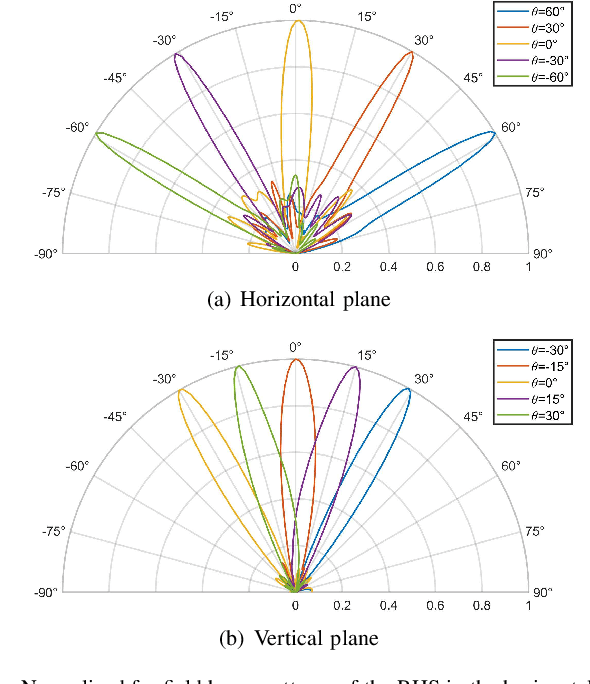
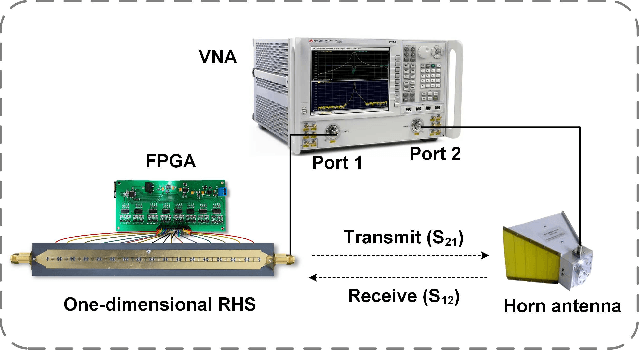
Abstract:Ultra-massive multiple-input multiple-output (MIMO) is one of the key enablers in the forthcoming 6G networks to provide high-speed data services by exploiting spatial diversity. In this article, we consider a new paradigm termed holographic radio for ultra-massive MIMO, where numerous tiny and inexpensive antenna elements are integrated to realize high directive gain with low hardware cost. We propose a practical way to enable holographic radio by a novel metasurface-based antenna, i.e., reconfigurable holographic surface (RHS). Specifically, RHSs incorporating densely packed tunable metamaterial elements are capable of holographic beamforming. Based on the working principle and hardware design of RHSs, we conduct full-wave analyses of RHSs and build an RHS-aided point-to-point communication platform supporting real-time data transmission. Both simulated and experimental results show that the RHS has great potential to achieve high directive gain with a limited size, thereby substantiating the feasibility of RHS-enabled holographic radio. Moreover, future research directions for RHS-enabled holographic radio are also discussed.
Reconfigurable Holographic Surfaces for Future Wireless Communications
Dec 13, 2021



Abstract:Future wireless communications look forward to constructing a ubiquitous intelligent information network with high data rates through cost-efficient devices. Benefiting from the tunability and programmability of metamaterials, the reconfigurable holographic surface (RHS) composed of numerous metamaterial radiation elements is developed as a promising solution to fulfill such challenging visions. The RHS is more likely to serve as an ultra-thin and lightweight surface antenna integrated with the transceiver to generate beams with desirable directions by leveraging the holographic principle. This is different from reconfigurable intelligent surfaces (RISs) widely used as passive relays due to the reflection characteristic. In this article, we investigate RHS-aided wireless communications. Starting with a basic introduction of the RHS including its hardware structure, holographic principle, and fabrication methodologies, we propose a hybrid beamforming scheme for RHS-aided multi-user communication systems. A joint sum-rate maximization algorithm is then developed where the digital beamforming performed at the base station and the holographic beamforming performed at the RHS are optimized iteratively. Furthermore, key challenges in RHS-aided wireless communications are also discussed.
Integrated Satellite-HAP-Terrestrial Networks for Dual-Band Connectivity
Jul 06, 2021
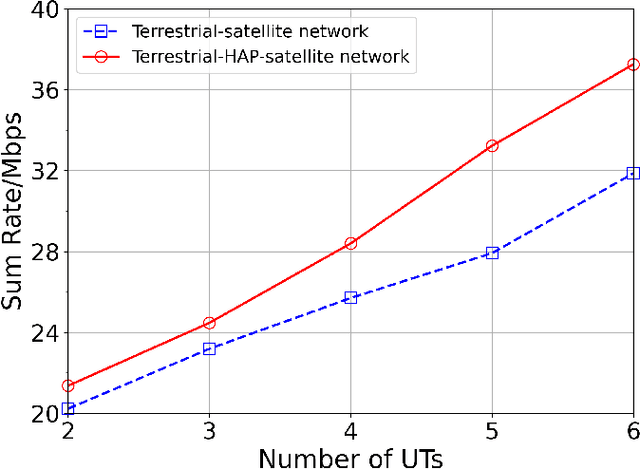
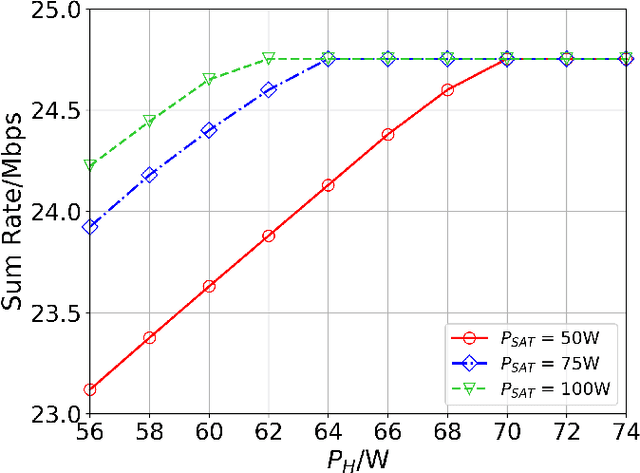
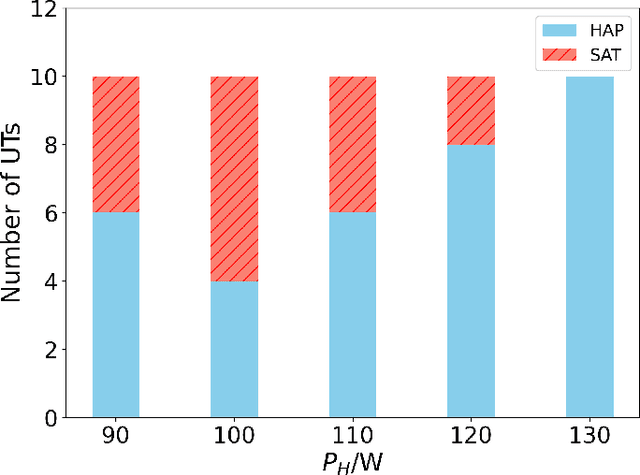
Abstract:The recent development of high-altitude platforms (HAPs) has attracted increasing attention since they can serve as a promising communication method to assist satellite-terrestrial networks. In this paper, we consider an integrated three-layer satellite-HAP-terrestrial network where the HAP support dual-band connectivity. Specifically, the HAP can not only communicate with terrestrial users over C-band directly, but also provide backhaul services to terrestrial user terminals over Ka-band. We formulate a sum-rate maximization problem and then propose a fractional programming based algorithm to solve the problem by optimizing the bandwidth and power allocation iteratively. The closed-form optimal solutions for bandwidth allocation and power allocation in each iteration are also derived. Simulation results show the capacity enhancement brought by the dual-band connectivity of the HAP. The influence of the power of the HAP and the power of the satellite is also discussed.
 Add to Chrome
Add to Chrome Add to Firefox
Add to Firefox Add to Edge
Add to Edge